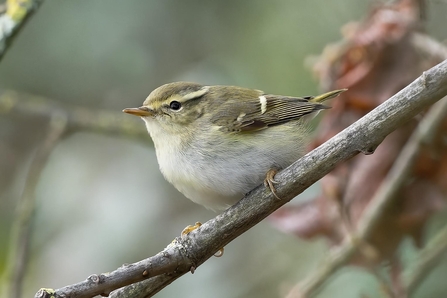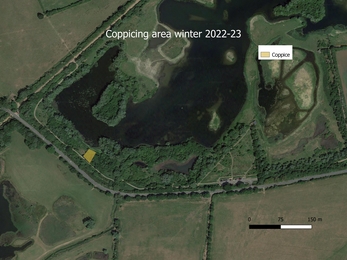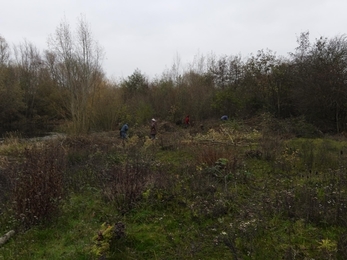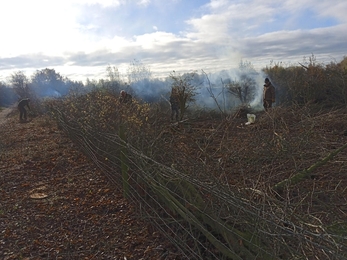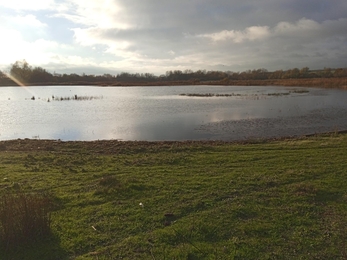Wildlife
Winter can be a quiet time for many, but for us it can be one of the busiest! With our winter wildfowl and migrating birds visiting us during the colder months, there is plenty of wildlife to look out for. We see the arrival of many overwintering ducks such as shoveler, wigeon, gadwall, pochard and many more, as well as winter visitors such as redwings and fieldfares, who you will see flitting through our hedgerows looking for delicious berries to eat. We have also seen some great flocks of golden plover this winter, which is a really wonderful sign that the island clearance that took place back in 2021 is working! Contractors undertook the task of clearing Hawthorn island to create a bare and open habitat, which is perfect for a range of birds such as our golden plover, and we are already seeing increasing numbers, and more regularly too. More information on the works that were carried out can be found here.
Back in November visitors had some brilliant views of an otter- and we are pleased to hear it was spotted again towards the beginning of January. Otters are a rare but regular visitor to Summer Leys, and usually you’d be pretty lucky to spot one! It is more common to see the signs of otter on the reserve, such as their droppings or ‘spraint’, which they leave in prominent places such as fallen trees, weirs and bridges. They contain visible fish bones and have a distinctive, pleasant smell, just like jasmine tea! The elusive otter is one of our top predators, feeding mainly on fish, waterbirds, amphibians and crustaceans. They have their cubs in underground burrows, known as 'holts' (we are keeping our fingers crossed for pup sightings!).
We also kicked off the New Year with another rare sighting- a yellow-browed warbler. Birders flocked to the reserve to see if they could catch a glimpse of this gorgeous little warbler, which hung around for a good week or so before moving on. These small green warblers are similar in size to a gold crest, with a very distinctive yellow ‘eyebrow’, with a distinctive call that is similar to a coal tit. Yellow-browed warblers breed in Siberia and may appear in the UK as they migrate south-westwards where they will spend the winter in southern Asia- although you don’t see them very often! Having said that, in the last 30 years there has been an increase in the frequency of yellow-browed warblers in Europe. Recent research from the University of Gothenburg in Sweden has looked into whether this is due to the ongoing result of vagrancy in a successful species, or whether a proportion have been successfully and repeatedly migrating through Europe as a new migration route evolves. More information on the research can be found on Bird Guides here.

